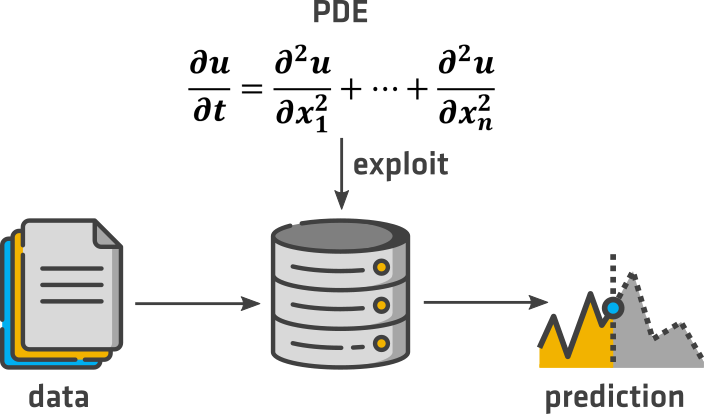Motivation
In materials science, knowledge is frequently encoded in the form of partial differential equations (PDEs), from
Schrödinger's equation to the phase-field equations solved for studying microstructure evolution. PDEs are local
conditions for a global solution. A function that satisfies these conditions is called a solution of the PDE (to
have a unique solution, we need further conditions such as boundary conditions and initial conditions). Being
able to solve for example the heat equation, allows us to infer the temperature at any interior point of a
material, if we only know the heat at the boundary. So, if we know the PDEs and can solve them we do not need to
apply a machine learning (ML) algorithm to make inferences from the boundary condition to the interior
conditions. But solving PDEs requires significant computational effort. That is a core limit in developing
computational materials science.
Objectives
We aim to develop ML-based PDE solvers that speed up the solution of PDEs that appear in materials science
problems. The speed up will allow us to solve downstream tasks such as fitting the model parameters to observed
data.
- ML-based PDE solvers allow us to incorporate more laws of physics into ML approaches and hence
to reduce the amount of required training data.
- The speed-up allows us to work with the models more interactively, and
- to solve downstream tasks such as fitting the model parameters to observed data.

